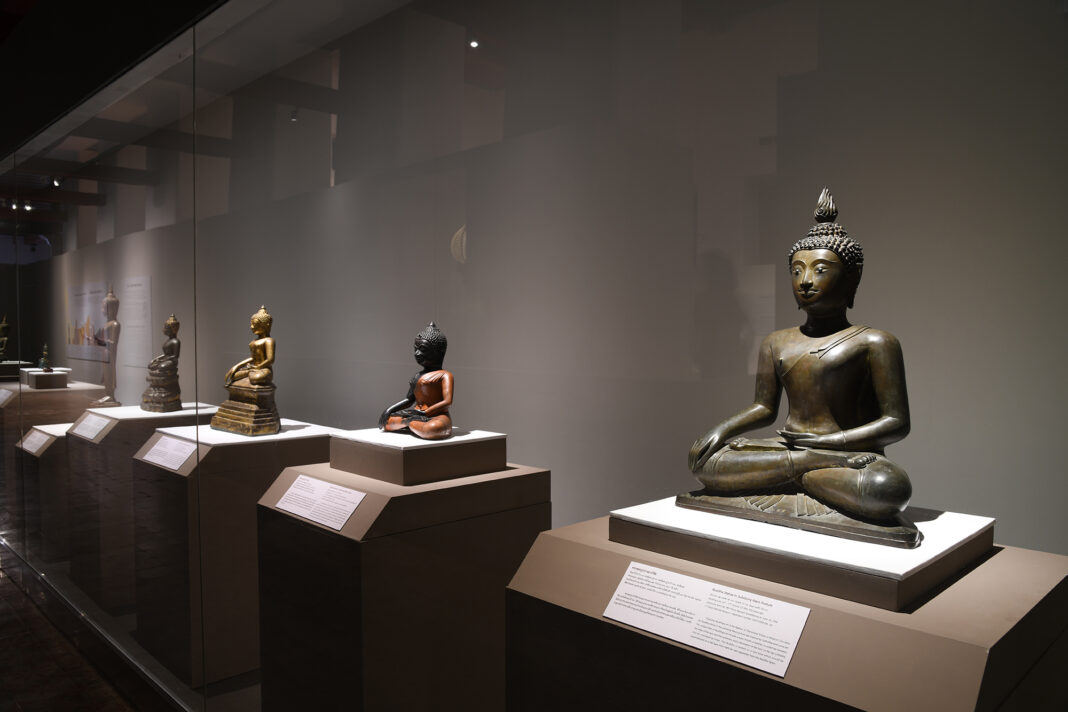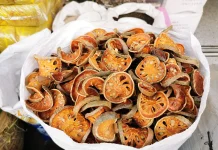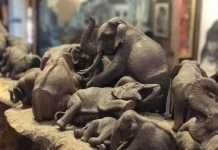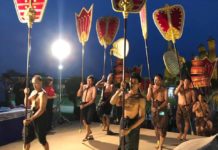In an unprecedented revelation, the Bangkok National Museum unveils an exquisite tapestry of 81 Buddha images, each meticulously sculpted over an expansive span of 1,300 years. Until September 10, a captivating fusion of aesthetic allure and profound spirituality beckons visitors to immerse themselves in an extraordinary experience.
This unparalleled exhibition casts a radiant spotlight upon the consummate craftsmanship embodied in these 81 Buddha sculptures, while simultaneously illuminating the rich historical tableau woven by early realms – Sukhothai, Lanna, Ayutthaya, and Rattanakosin. These venerable domains, distinguished by their unique spiritual practices, sculptural traditions, and regal sponsorship, have woven an indelible thread into Buddhism’s legacy through the creation of these extraordinary images.
The resplendent Buddhist sculptures that now grace this exhibition are not merely masterpieces; they are cherished national treasures meticulously curated from eminent museums scattered across Thailand. The narratives that breathe life into Thailand’s Buddhist sculptural heritage effortlessly transport onlookers back to the sixth century, when the luminous artistry of Indian Buddhism reached its zenith.

Much akin to the meandering currents of Buddhism, these Buddha sculptures charted a course to contemporary Thailand through age-old trade routes. Navigating the vast expanse of the Bay of Bengal, intrepid Indian merchants and devoted Buddhist monks embarked on maritime odysseys to Suvarnabhumi – the legendary “Land of Gold.” In so doing, they became catalysts for an exchange of economics and philosophical discourse, etching their influence onto the local identity while forging connections with the broader world.
Amid this extraordinary collection, a crown jewel emerges – the Standing Buddha Statue in Teaching Posture, the oldest known Buddha sculpture in Thailand. Adorning the distinguished Anuradhapura style of Lanka (1,400 – 1,500 years ago), this bronze masterpiece stands at a modest 30 centimetres. It elegantly showcases the Buddha’s profound wisdom through a right hand poised in a teaching gesture, while the left hand delicately clasps the robe. Echoes of India’s Amaravati style (2nd to 4th century) resonate, bestowing an enigmatic grace upon this historical artefact.

A gift to Prince Damrong Rajanubhap (a visionary historian and half-brother to King Chulalongkorn) from the northeastern Thai region, this Standing Buddha Statue in Teaching Posture serves as a testament to the cultural currents that connected distant shores. Similar bronze Buddha images have graced the landscapes of Southeast Asia, believed to have been introduced by sailors, merchants, and Indian sages who sought refuge in the enigmatic realm of Suvarnabhumi. This striking figure encapsulates a moment of profound significance, where art, spirituality, and historical connections converge in a mesmerizing embodiment of wisdom and artistic mastery.
A monumental zenith of the exhibition lies in the form of the inaugural indigenous Buddha sculpture, hewn from the heart of Thailand. Forged between the sixth and eighth centuries, this standing Buddha exudes echoes of its overseas counterparts. The left hand gently cradles the robe’s hem, while the right hand exudes poise in the Dispelling Fear Posture, in lieu of the customary Teaching Posture. With a countenance of grace, intricate curls, and an ethereal robe, this sculpture bears the unmistakable imprint of Gupta artistry.


The Earliest Buddhist Sculpture Gallery houses an assembly of seated Buddhas, a treasure trove that pays homage to distinct schools of artistry: Sukhothai, Lop Buri, Lanna, Ayutthaya, and Rattanakosin. While discerning the nuanced differentiations between Sukhothai, Lanna, and their counterparts may pose a challenge to the untrained eye, the exhibition extends a gracious invitation to surrender to the allure of beauty and style, inviting these evocative works to serve as guides through a captivating voyage across time.
Upon revisiting this illustrious exhibition, a magnetic pull may draw visitors to delve deeper into intricate minutiae, seeking to unravel the interconnected stories that bind sculptures from disparate realms.
Plan Your Visit
The exhibition “The Important Buddha Statutes in National Museums” is on display at the National Museum Bangkok until September 10, 2023. The museum is open Wednesday to Sunday, from 9am to 4pm.












